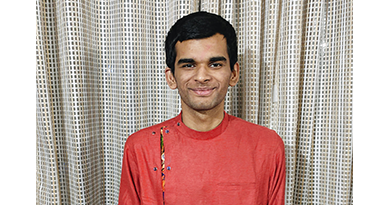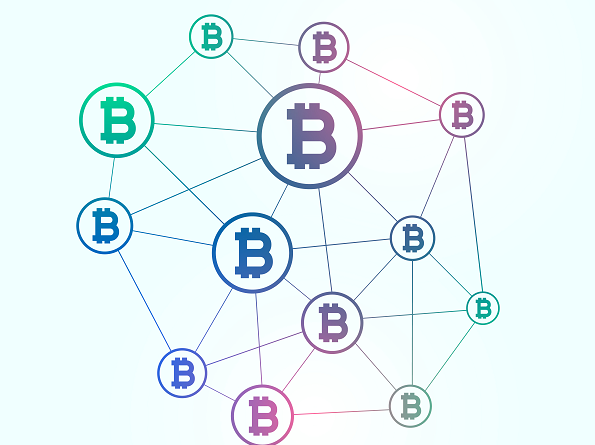The Design Series: What is UI Design
People often use the terms User Interface (UI) and User Experience (UX) interchangeably, as we previously explained in our “What is UX design?” article. If you’re interested in a career in UI design, a quick google search may also still leave you a bit confused. While UX and UI design inevitably go hand in hand, they are two completely different disciplines. Think of the relationship between UI and UX design the same way you look at doubles partners in badminton or tennis, they both play the same game but have different styles.

UI comes with its own set of tasks and therefore requires a different skillset. If you’re thinking about a career in UI design, you’re in the right place. This article will cover the following topics:
1. An introduction to UI design
2. The visual element of UI design
3. The human element of UI design
4. What does a UI designer actually do
5. What kind of skills are expected from UI designers
An introduction to UI design
Both UI and UX aim to create a positive experience for the user. As we previously explained, UX design is all about enhancing the overall experience for the user in terms of usability and accessibility. However, UI design determines the elements users use to literally interact with a product. Think buttons, fonts, typography, forms, colour palettes, and icons amongst many other important interface elements. UI design also includes screen transitions, layouts, and interface animations. Any visual element, animation, and interaction are designed by a UI designer.
The Visual Element of UI design
UI’s entire focus is on the user’s visual experience. UI influences how any user interacts with any interface; UI work can be found on websites, apps, video games. It focuses on how a user will navigate from point A to point B through visual touchpoints (buttons, scroll bars).. Every screen through which users move is designed by a UI designer. Designers create interactive and visually appealing elements to make this movement possible and enjoyable for users.
The Human Element of UI design
A UI designer also has to take human behaviour into consideration when planning designs. Why? Because a good interface requires little to no thought from the actual user. Think about all the mindless scrolling you do on your favourite apps; they’re effortless to use, simple, and aesthetically pleasing. For example, think about the time you first installed Tinder. Did it take you ages to figure out how to use it? Swipe right for yes and swipe left for no. It’s incredibly simple. Tinder’s ease of use is evident as everyone and their grandma now use it to get dates. In fact, it’s so easy to use that I know you have re-downloaded it many times.
UI designers always think about the human user and how their mind works. Designers then use elements like spacing, colour, and patterns to guide the user. A successful UI designer will learn to use intuition. Designers put themselves in their user’s place and learn to anticipate what the user expects at each stage. Designers then use this to design visual and interactive designs that respond in a way that seems natural to the user.
A good example of a designer’s intuition can be seen in many real estate related apps. You see an apartment or house that you really like, you open up the gallery, and the display takes over the screen. However, you also notice a small “1/10” caption on the page and then you just naturally know to swipe to see more photos despite there being no explicit instructions to do so. A UI designer anticipated this by thinking about what a user would expect and designed the interface accordingly.
UX is the foundation of the app, kind of like a blueprint. The UI then fills it with visuals and interactive touch points which guide the user through as naturally and intuitively as possible.
Now that you have an idea of what UI design is, you must be wondering what kind of tasks a UI designer deals with on a daily basis.
What does a UI designer do
UI designers are tasked with bringing the UX designers’ vision to life. Let’s have a look at how they would go about accomplishing this task.
Design
You need to be prepared to get involved with a whole lot of hands-on design work. Designers design screens, create visual touchpoints, and the interactivity that fuels the product. The product must be well-oiled and coherent, which is why consistency is also key for designers. Designers ensure consistency and it’s done by creating a style guide and visual language that will be used across the board. Here are some of the elements that a UI designer would work on:
– Responsive design is how an app would display on a number of different screen sizes.
– Designing interactive elements such as scroll bars, buttons, and sliders.
– Choosing appropriate fonts and typesetting.
– Creating animations.
– Designing each screen a user will interact with, including the layout.
– Designing visual patterns and hierarchies that result in an intuitive user interface.
– Using colour theory to design one-of-a-kind colour palettes that inject some much-needed personality into the product.
– Designing the interactivity of each element. i.e. what does a button do when a user clicks it? Does it pulsate, change colour, etc.
– Establishing a style guide to ensure consistency.
The design stage includes creating mood boards and sketching out how the interface might look. UI designers will often use software like Photoshop to design drafts.

Collaborate
UI designers have to collaborate with clients and UX designers. If you’re planning to become a UI designer, then you’re going to need to bring out your extroverted side to play. UI is still about human users, which is why you will spend a healthy amount of time learning about the brand and its targeted users. You’ll have to step into your user’s mind and figure out what drives the user as they move about the product’s interface. While user research is traditionally done by the UX designer, the UI designer is tasked with implementing it. Have no fear; the UX designer will provide you with a wireframe to work from. You’ll then hand your design over to developers. Furthermore, as a UI designer, you’ll need to have clear methods of communication between various departments.
Prototype
Testing your designs is crucial in figuring out all the bugs and in seeing what works and what doesn’t. To ensure the product is as smooth as possible, designers will develop a number of prototypes. It’s a trial and error process which helps designers figure out all the bugs. There are a few different types of prototypes:
1. Low fidelity wireframes are basic layouts and elements displayed on paper. These are rough sketches of user flows. They are a great way to quickly communicate ideas or changes with minimal cost.
2. Once the user flows and screen layouts are decided, clickable prototypes enter the scene. They are static screens that contain a fair amount of detail in them.
3. High fidelity prototypes closely resemble the final product. This is when any last stage fine-tuning takes place before the design is shipped off to the developers.

If tasks like these excite you, then UI design may be a great fit for you. Keep in mind that these are just a few of the tasks you’ll have to deal with on a regular basis. If you’re still interested in pursuing UI design, you may want to learn more about what kind of skills UI designers are expected to have.
What kind of skills are UI designers expected to have?
UI designers boast a diverse skill set with a combination of both hard and soft skills.
Hard Skills:
– Require an in-depth understanding of the fundamental methods, theories, and practices that form the basics of UI design. These include typography, colour theory, UI design patterns, and important design approaches like the Gestalt Principles.
– Entry-level UI designers are expected to be proficient in at least one industry-standard design and prototyping tools such as Sketch, Adobe XD, or InVision. Start with one of the tools and, you’ll be able to understand the others as you learn.
Soft Skills:
– Communication is everything in the world of UI design. You need to be able to explain the functionality of your designs to developers with extreme clarity. You’ll also be expected to communicate with clients and any other stakeholders, to explain and justify your designs in great detail.
– UI designers require a healthy degree of empathy. Ensuring inclusivity and accessibility is imperative for creating an interface that many users will enjoy.
– Collaborating with UX designers, web developers, stakeholders, and clients is a staple of the job. For example, good communication skills are necessary if you want to find success as a UI designer. You also need to be a team player. While you may be good at giving creative direction, you also need to be open to receiving it. Always keep the end goal in mind.
UI design jobs are hot right now and there’s also room for tremendous growth and improvement in the industry. UI design offers a variety of tasks and will require you to be incredibly creative and flexible. UI designers need to be both visually and psychologically aware of what their users will want. Simply said, if you want to design user-friendly interfaces, you need to understand how people work.
If you’re interested in gaining new and in-demand UI design skills, please check out Internshala Trainings UI/UX design training here. If you don’t think UI design is for you but you’re curious about UX design, check out our articles on “What is UX design?” and “What does a UX designer do?”.
If you’re already familiar with UI or UX design and are looking for experience, check out our UI/UX internships and fresher jobs.



